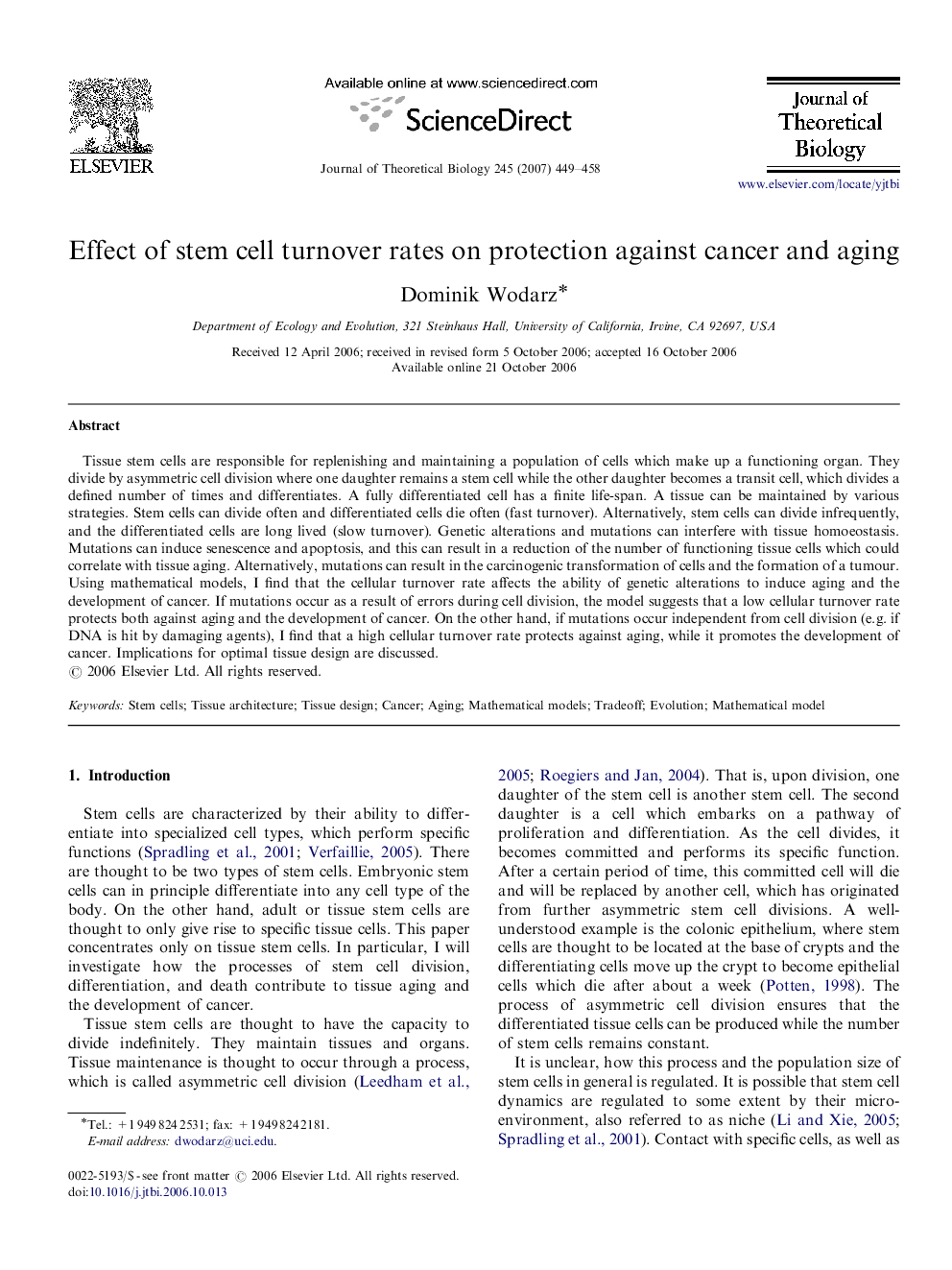| کد مقاله | کد نشریه | سال انتشار | مقاله انگلیسی | نسخه تمام متن |
|---|---|---|---|---|
| 4499099 | 1319014 | 2007 | 10 صفحه PDF | دانلود رایگان |

Tissue stem cells are responsible for replenishing and maintaining a population of cells which make up a functioning organ. They divide by asymmetric cell division where one daughter remains a stem cell while the other daughter becomes a transit cell, which divides a defined number of times and differentiates. A fully differentiated cell has a finite life-span. A tissue can be maintained by various strategies. Stem cells can divide often and differentiated cells die often (fast turnover). Alternatively, stem cells can divide infrequently, and the differentiated cells are long lived (slow turnover). Genetic alterations and mutations can interfere with tissue homoeostasis. Mutations can induce senescence and apoptosis, and this can result in a reduction of the number of functioning tissue cells which could correlate with tissue aging. Alternatively, mutations can result in the carcinogenic transformation of cells and the formation of a tumour. Using mathematical models, I find that the cellular turnover rate affects the ability of genetic alterations to induce aging and the development of cancer. If mutations occur as a result of errors during cell division, the model suggests that a low cellular turnover rate protects both against aging and the development of cancer. On the other hand, if mutations occur independent from cell division (e.g. if DNA is hit by damaging agents), I find that a high cellular turnover rate protects against aging, while it promotes the development of cancer. Implications for optimal tissue design are discussed.
Journal: Journal of Theoretical Biology - Volume 245, Issue 3, 7 April 2007, Pages 449–458